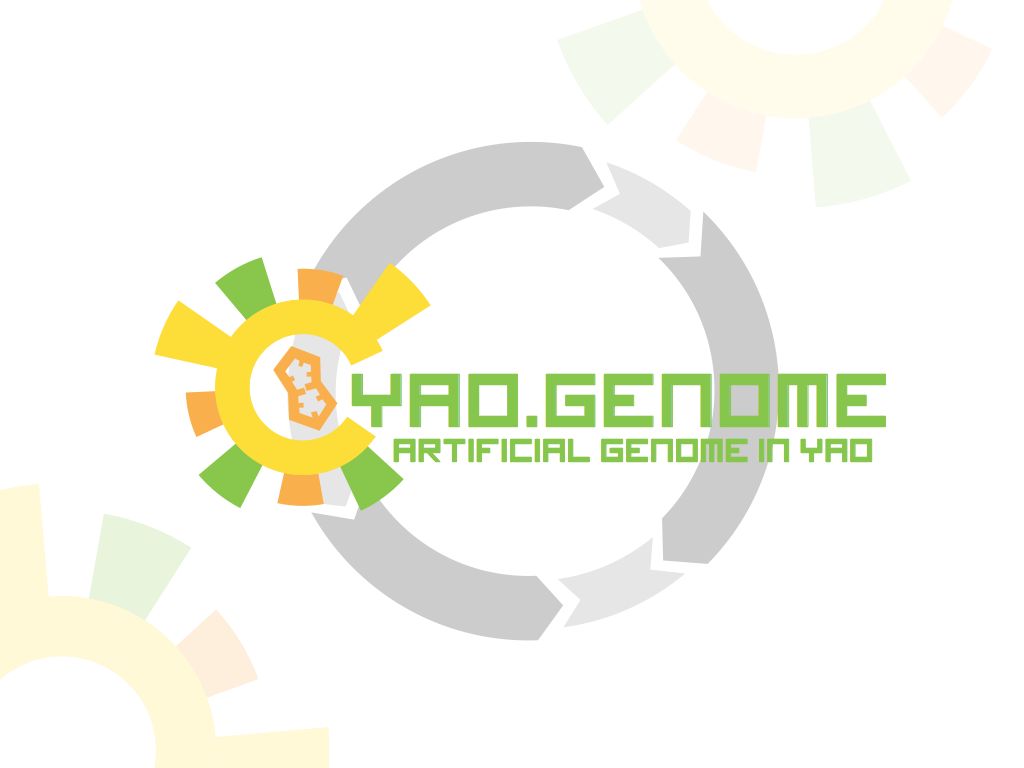Team:Shenzhen/Project/YAO.Genome
From 2012.igem.org
-
S
BioBricks
- Summary
- YAO.Genome
- YAO.Channel
- YAO.Sensor
- YAO.Suicider
-
p
Notebook
- Team History
- YAO.Genome
- YAO.Channel
- YAO.Sensor
- YAO.Suicider
- YAO.Factory
-
e
Practices









- Self-replication
- High capacity of genes
- Homologous Recombination
- Shuttle Plasmid
- Final YAO.Genome
Introduction
YAO.Genome is the core part of YAO which’s similar to genomes of mitochondria and chloroplasts but ready to be embedded any new system. Here, we proposed YAO.Genome has two features, self-replication and high capacity of genes. Construction of YAO.Genome contains three stages. First, transform a GFP gene into the mitochondria by homologous recombination. Second, build shuttle plasmid which can replicate both in E. coli and mitochondria, but only contain a GFP gene. And then we introduce it into MT. Third, redesign a genome satisfying all the criteria as we mentioned before. As experiment time is limited, we only fulfilled the first part, mitochondria expressed GFP, design the second part, shown in table of BioBricks, and drew picture of our imagination of the last part.
Key Features
- YAO.Genome can replicate in YAO and provide a stable circumstance for embedding any other system.
- YAO.Genome can embed more than one system and each of them won’t disturb others from working well.
Stages Towards YAO.Genome
The first step is, to transform a GFP gene in mitochondrial codon table, into mitochondria, and integrate it onto mtDNA by homologous recombination. Then this mtGFP could expressed, with the help of natural transcriptional and translational elements on mtDNA.
To carried out experiments on an auxotroph mutant of yeast, two vectors are needed. One is to be transformed into mitochondria, carried with upstream and downstream recombination sites, with mtGFP inside. The other is for yeast nucleus, to remedy the strain defect and work as a screening condition. These two vectors will be mixed and transformed by gene gun experiments.
After using gene gun to inject plasmids into Rho 0 cell, selective medium will be used to select cells with plasmids in them, which are called Rho- cells.
After Rho- cell mated with Rho+ cell, homologous recombination will happen. Mitochondria in them will fuse together, and a cell with GFP gene in it will be obtained if luckily.
Second, we wish that a vector could be replicated, transcribed and translated in a natural mitochondria. This shuttle plasmid can replicate both in E. coli and mitochondria, with an mtGFP gene.
Shuttle plasmid contains components, which can make sure shuttle plasmid can work independently in mitochondrion. The sequence contains origin of replication, promoter and RBS from mitochondrion, which is followed by mtGFP. No homologous recombination will be processed in this stage. If shuttle plasmid inject into mitochondria successfully, GFP gene will be expressed in mitochondria.
Annotations have to be carried out to find available elements in mitochondria, for promoters, origins of replication, RBS and terminators. If shuttle plasmid transduction is succeed, we can do some further standardization works for these parts.
Finally, redesign a genome satisfying all the criteria as we mentioned before. It would be a chassis for embedding any other system like biosynthesis system or signaling system, as we want.
The backbone of YAO.Genome comes from yeast mitochondrial genome, where unnecessary original systems will be removed, such as known coding regions and duplications. Replication related, translational and transcriptional elements, such origins of replication, tRNA genes, rRNA genes, are reserved.
 "
"





























